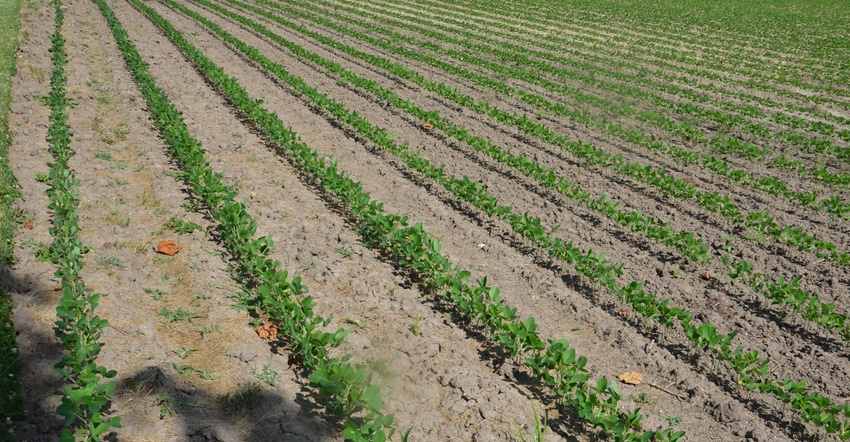
Should you plant corn or soybeans first? Does row width matter? Does soil pH affect herbicide performance?
These were just some of the tough questions farmers at the Top Farmer conference, hosted by the Purdue University Center for Commercial Agriculture, asked a panel of three crop specialists: Bob Nielsen, Extension corn specialist; Shaun Casteel, Extension soybean specialist, and Bill Johnson, Extension weed control specialist.
Should we plant corn or soybeans first based on past performance?
Casteel: We recommend planting soybeans early if you can. A goal might be to plant in the April 20 to May 10 window. Some may want to plant earlier. One strategy, if you can only plant corn or beans at once and not both, is to plant corn for a few days if you start in April, then stop and plant soybeans for a few days. Others may want to start by planting some soybeans, then switch to corn.
What we’ve found from early planting is that you may be able to trick soybeans into putting on 20 to 22 nodes per plant instead of 18 or so. The key is getting vegetative growth early. Soybeans are partially controlled by the photoperiod response. They tend to start flowering around the longest day, or shortest night, of the year in June. So, you want as much vegetative growth before that point as possible.
Nielsen: Shaun’s [Casteel] strategies make sense. Long-term studies indicate corn yield potential begins to decline after about May 10. However, we saw even last year that planting date is only one variable to corn yield. Many fields planted June 1 or later yielded over 200 bushels per acre.
Does row width matter for soybeans?
Casteel: We typically don’t see much difference between 15-inch and drilled rows over much of Indiana. The goal is to have the field “green to the eye by the Fourth of July.” When that happens, you have the full factory working for photosynthesis, plus shading can help on later weed control.
However, many fields didn’t make that goal last year, and we still saw reasonable yields. It was one of the slowest years for planting progress for soybeans in 40 years, and the Indiana average yield was still only about 2 bushels, or 3% to 4%, below trend yield based on the January USDA crop report. The furthest departure we’ve seen in the past 40 years for yield in years with slow crop planting progress was 10% in 1996.
Does soil pH affect herbicide performance?
Johnson: It depends upon the herbicides you’re talking about. You need to check the label for each herbicide and look for statements about the possible effect of pH on herbicide effectiveness. With atrazine, for example, you can see more problems with weed escapes at pH levels below 6.0.
On the flip side, there are some soybean herbicides that become less effective at pH levels above 7.5. There are also soybean herbicides where crop injury can become a concern if soil pH is 7.5. These include Group 14 herbicides like sulfentrazone and salflufenacil.
Editor’s note: This is the second in a series of three articles answering tough 2020 crop questions. Read the first article here, and watch for the final installment tomorrow.
About the Author(s)
You May Also Like




